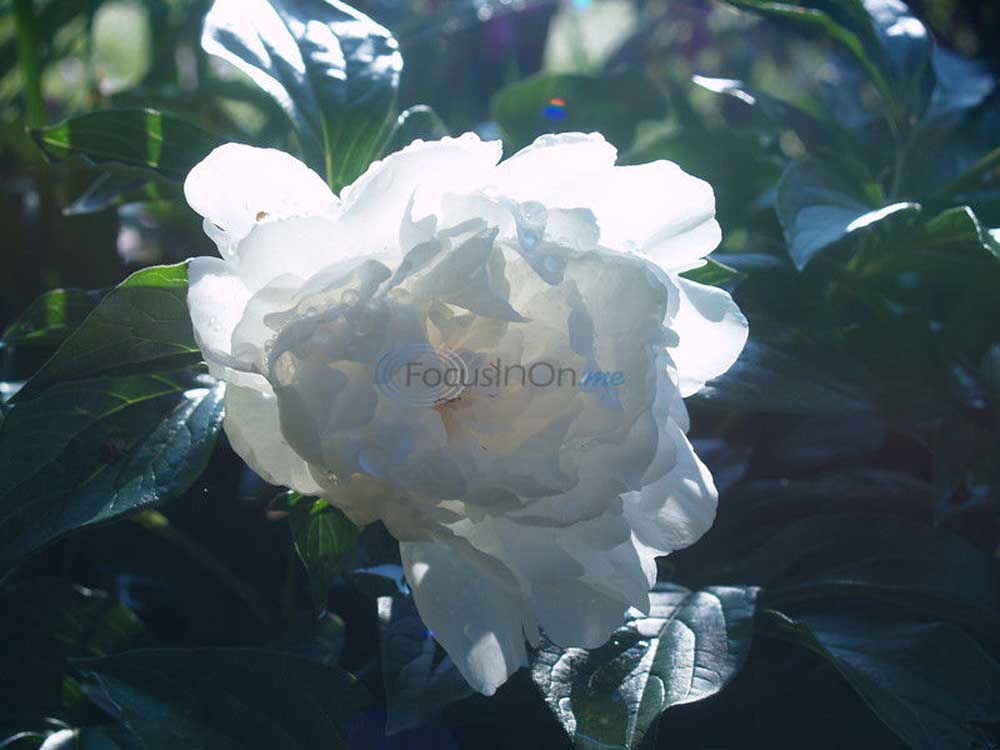With great care, lovely peony bushes can be grown locally
Published 11:32 pm Wednesday, April 23, 2014

- COURTESY FESTIVA MAXIMA, a peony variety proven to be reliable in the South, blooms in the Heritage Garden in the Tyler Rose Garden.
I grew up in Ohio, and my father was a hobby gardener, with a large vegetable patch in the back of our property, and lots of different kinds of shrubs and trees that he planted. Being just a kid, I didn’t pay much attention to any of that, but in addition to the vegetable garden, I have a vivid memory of a long row of peony bushes lining a sandstone pathway leading back to the garden. Big, dark green bushes with large, blousy, full blooms that could not be missed. I also remember the little black ants that were always visiting the blooms.
Well, that was Ohio, which is altogether a different climate than Texas. Peonies flourish in northern climates where the winters are chilly and the summers mild. But, intrepid gardeners always like to try to grow things regardless of the prevailing wisdom of local experience. Some call it “pushing the zone,” referring planting things not recommended for according to the USDA’s cold hardiness zone map.
Peonies are a beloved plant because of their very large, showy beautiful blooms. You cannot help but be attracted to a peony bush in full bloom. Growing peonies in the South can be a challenge, and we are just about at the southern limit where they will successfully grow and put on a floral show.
One peony variety that has withstood the test of time for being reliable in the South is a variety called “Festiva Maxima.” This herbaceous peony variety (herbaceous peonies die to the ground every winter) can be found in old gardens all across the South, and is often passed along from generation to generation. Festiva Maxima bears large, white, double flowers about 4 to 5 inches across, with small streaks of red in the center of the flowers. It is one of the most dependable and long-lived herbaceous peony that can be grown in the lower South.
There are other varieties that are often mentioned and recommended for Southerners, including “Kansas,” “Karl Rosenfield,” “Sarah Bernhardt” and others. One thing they all share is they bloom earlier in spring before it gets hot. Late-blooming varieties must contend with our hot summer temperatures and sun, and buds often will not open or they’ll quickly fade.
Another group of peonies are the tree peonies, which are deciduous shrubs. You don’t see these too often in the South, though some folks have reported success. One home garden on this year’s Smith County Master Gardener Home Garden Tour has a 15-year-old tree peony. It won’t be in bloom on tour day (June 7) but according to owner Kathy Babin, it bears dozens of blooms every year.
Peonies in general bloom and do best in full sun, or sun with some afternoon shade. They are longed-lived plants, and resent being moved around in the garden, so if you are thinking of trying some, chose your spot carefully. They also take a few years to get established and start blooming reliably, so the gardener’s patience is also required.
Peonies are best planted in the fall or winter, in a well-drained, well-prepared soil. Spare no effort because as I mentioned previously, you shouldn’t be moving these around once planted.
Peonies have growth buds called eyes, and the plants should be planted so these are just below the soil surface. Do not mulch them in winter so they will accumulate good chilling, but do mulch them in summer to help keep the soil cool and moist. They probably will not bloom the first or even second year, so be patient.
Keith Hansen is Smith County horticulturist with the Texas A&M AgriLife Extension Service. His web page is http://EastTexasGarden ing.tamu.edu. His blog is http://agri life.org/etg.






